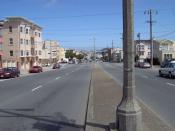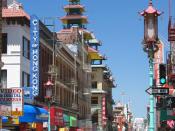GROUP PROJECT ACTIVITY
FALL 2004
BUILDING AND MANAGING A PORTFOLIO OF FINANCIAL ASSETS
FUND NAME:
MONEY MAKER
FUND MANAGERS
ASKIA ROBERTS
Investment Objective
Invest an endowment of $100,000 and get the highest rate of return possible in a three-month period. Date of investment transactions will begin on September 2, 2004 and terminate on December 6, 2004.
Goal
Simply stated, to yield a return on investment 10% or higher in one quarter of investing.
Strategy
Buy low, Sell high. The managers of the Money Maker fund will implement a strategy of investing only in options that offer a substantial high rate of return. This requires lots of research from the fund managers in various fields of the market. We will be looking for options that are very sensitive in the market place and temporarily undervalued. We will Invest in the undervalued stock and sell at a predetermined rate. Stocks will generally be held for a time period of 15 business days not to exceed 30 consecutive business days, at any given time during the funds activity.
Focus
The managers at the Money Maker fund pay very close attention to market analysis and corporate activity in sectors of interest. Events such as leadership change, implementation of new products, demise of existing products, or the emergence of a scandal in sensitive markets is where the managers of the Money Maker fund are looking for opportunities.
Risk Assessment
Due to the strategy, the risk is very high but acceptable.
Current Economic Conditions
From Federal Reserve Beige Book
Reports from the Federal Reserve Banks indicated that economic activity continued to expand in late July and August, although several districts indicated that the pace had slowed since their last reports. Districts' characterizations of the rate of expansion ranged from slow (St. Louis) to solid (San Francisco),


